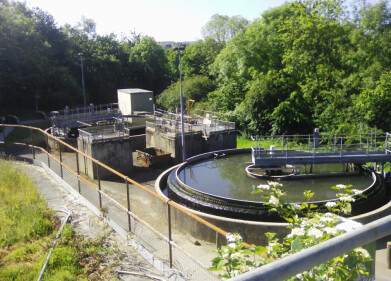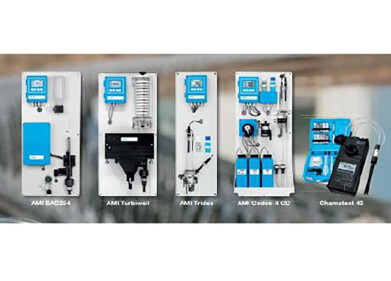Water/Wastewater
Non-Contacting Control for the Mersey Estuary Pollution Alleviation Scheme
Aug 21 2013
Pulsar Process Measurement (UK) have supplied non-contacting ultrasonic level measurement instruments that have been incorporated into United Utilities flagship project, the Mersey Estuary Pollution Alleviation Scheme (MEPAS), providing key control and monitoring functions throughout the network of CSO/SSO chambers, vortex and interceptor sewers that form the MEPAS network.
When the major Sandon Dock Wastewater Treatment Works was expanded during the 1990’s, the scheme included a substantial network of interceptor sewers and CSO, designed both to separate out solids and particulates before the main Works and to manage storm surges. Some of Pulsar’s earliest equipment was used as the project went live, including the unit that bears the serial number 0001. The Mersey is now so clean that, within a few hundred yards of the sewage treatment works itself, a scuba diving centre is flourishing, and many species of fish have re-established themselves in the river.
However, following major and damaging floods in 2010, it became clear that the existing control and monitoring regime that controlled the flow to the WwTWwas not operating as it should. The new control systems contractor, Ramptec, along with UU’s modelling team, redesigned the system operation through the 39 CSO’s within the network. Pulsar Process Measurement supported, ensuring that the ultrasonic level measurement instruments at each location were performing correctly.
Under the new control arrangement, the holding capacity of the system is maximised, so storm flows to the works are better managed, discharges of untreated and semi-treated sewage to the Mersey are minimised, and limits are in place and controlled accurately to avoid any risk of further flooding arising from overflow of the system. Each CSO includes three or more Pulsar units, at measurement points to maintain control and flows – within the chamber, at the outfall end, measuring river levels and within the vortex chamber feeding on to the wastewater treatment works. Some of the applications were challenging, including measurement down narrow pipes that was previously undertaken using pressure transmitters. Pulsar remained involved throughout the project to re-establish control, providing service and commissioning support to Ramptec.
As Ray Watts of Ramptec put it: ‘We have a very good relationship with Pulsar. The fact that we have their first unit, dating back to 1997, and also some of their latest equipment, proves that they supply good equipment and are able to back it up effectively’
The sternest test of the operation of the new system came in September 2012. The 25th September saw some of the worst storms on record, and the effluent height in the culvert reached 4.5m AOD (metres above ordinance datum), a volume of water that would have potentially resulted in devastating flooding if it had not been properly controlled. Both the control system and the CSO’s worked perfectly, however, releasing the excess water safely away from habitation.
Digital Edition
AET 28.3 September 2024
September 2024
Business News - ENVEA announces acquisition of APAQ Group - SICK and Endress+Hauser sign strategic partnership - Efforts to curb gas flaring intensify amid environmental concerns Air Monito...
View all digital editions
Events
Oct 05 2024 New Orleans, LA., USA
Oct 07 2024 Cape Town, South Africa
13th St Petersburg International Gas Forum
Oct 08 2024 St. Petersburg, Russia
Oct 08 2024 Kuala Lumpur, Malaysia
Oct 09 2024 Birmingham, UK


















